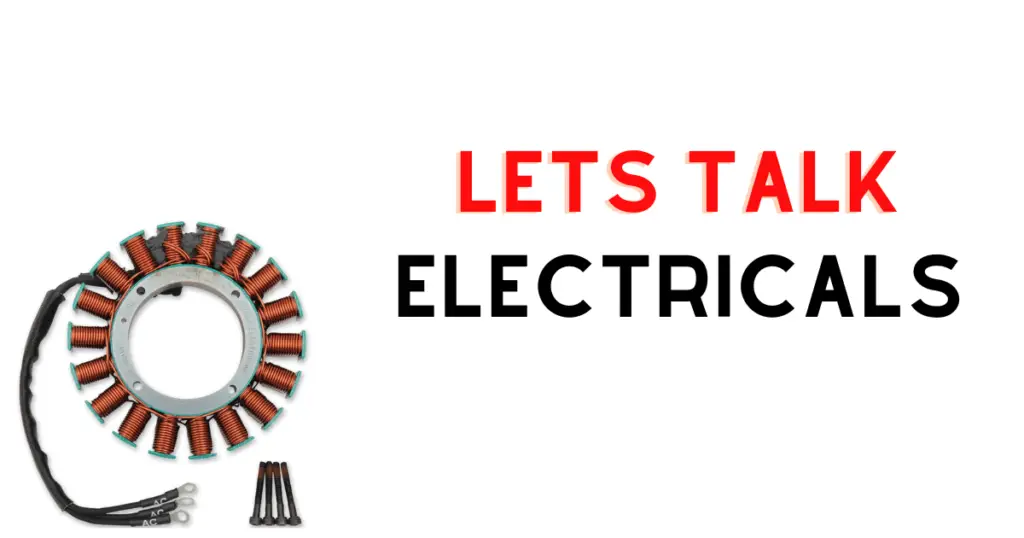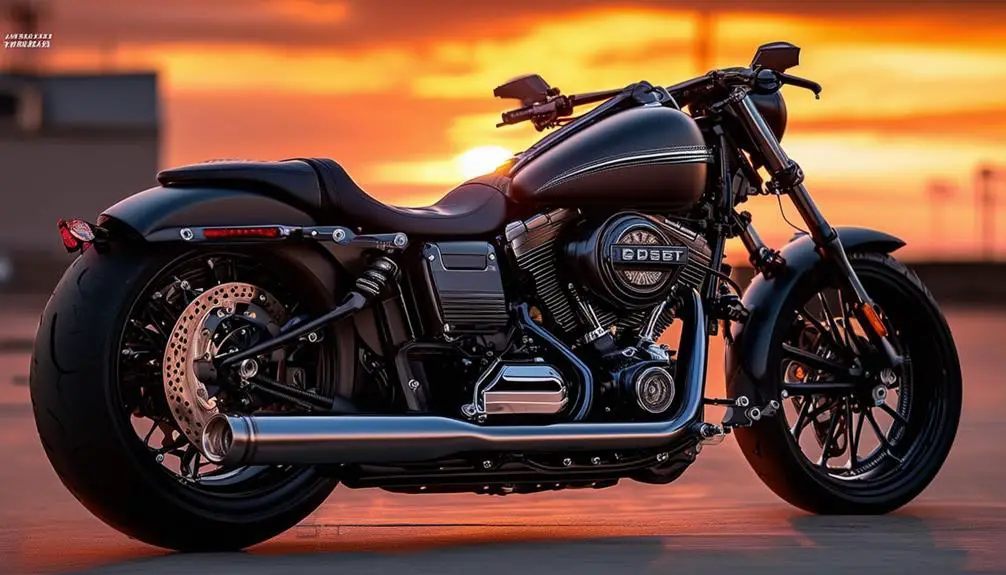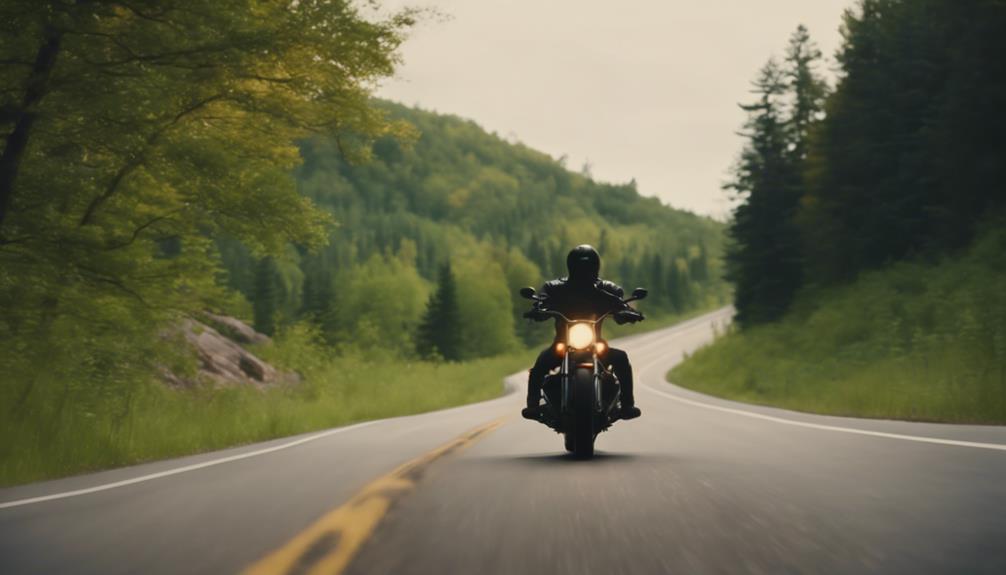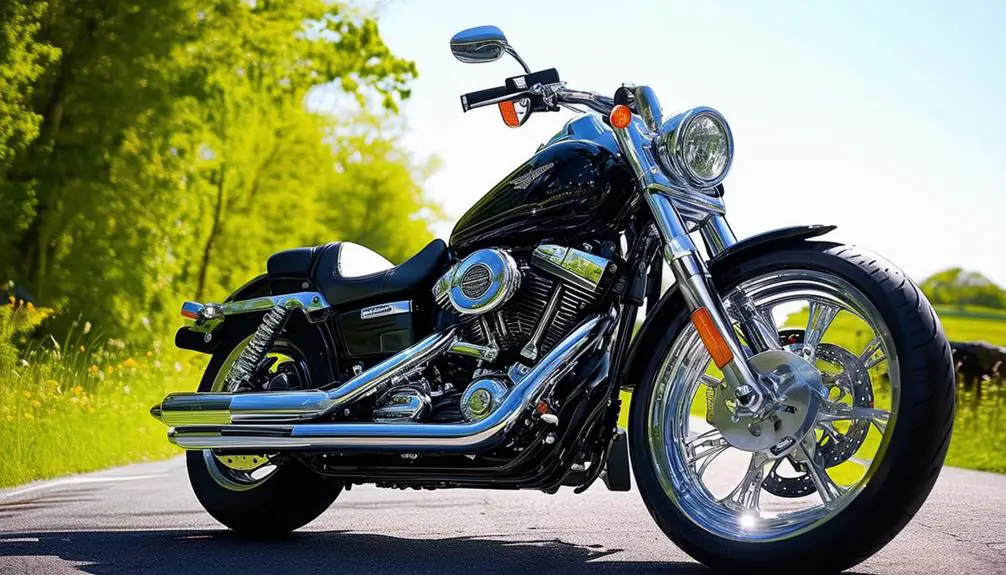Are you experiencing a sudden realization that your Harley lost all electrical power? This can be a frustrating and potentially dangerous situation, but don’t worry, there are steps you can take to troubleshoot and resolve the issue.
One possible cause of this problem is a loose ground connection. The guide recommends inspecting the battery’s ground cable and making sure it is securely connected to the battery and the bike’s frame. If the ground connection is loose, it can prevent the electrical circuit from being completed and cause the bike’s components to malfunction. By checking and tightening the ground cable, you may be able to restore power to your Harley. But, unfortunately, the easiest solution isn’t aways the solution.
Another potential culprit is a blown fuse. The guide suggests locating your fuse box and inspecting each fuse, replacing any that are blown with the correct amperage rating. If a fuse blows again immediately after replacement, there may be a short circuit in the electrical system that requires further investigation. By following these troubleshooting steps, you can hopefully identify and fix the issue, getting your Harley back up and running safely and smoothly. But what else do you need to know?
Other problems worth knowing about:
– 3 Harley Davidson Transmission Problems That Shift Your Mood
– 4 Harley Hydraulic Clutch Problems, Their Causes and Fixes
– 1 Complete Guide to Harley Davidson No Spark Troubleshooting
Overview of The Harley Davidson Electrical System

If you own a Harley, you know how important it is to keep your electrical system in good condition. Without proper maintenance, you may experience issues like a dead battery, blown fuses, or even a complete loss of power. In this section, we’ll cover the components of your Harley’s electrical system and regular maintenance you can perform to keep it healthy.
Components of the Electrical System
Your Harley’s electrical system consists of several components that work together to power your bike. Here are some of the most important ones:
- Battery: The battery provides power to start your motorcycle and operate the electrical components.
- Charging System: The charging system recharges the battery while the engine is running.
- Stator: The stator is a component of the charging system that generates electricity as the engine runs.
- Voltage Regulator: The voltage regulator regulates the voltage produced by the stator and prevents overcharging of the battery.
- Electrical Connections: Electrical connections are the points where different components of the electrical system meet.
- Wiring Harness: The wiring harness is a bundle of wires that connects all the electrical components of your Harley.
Regular Maintenance for Electrical Health
To keep your Harley’s electrical system healthy, you should perform regular maintenance. Here are some tips:
- Check your battery: Make sure your battery is securely fastened and free of corrosion. If your battery is more than three years old, consider replacing it.
- Inspect your charging system: Check your stator and voltage regulator for signs of wear or damage. If you notice any issues, have them repaired or replaced.
- Clean your electrical connections: Dirt and corrosion can cause electrical connections to fail. Clean them regularly with a wire brush or contact cleaner.
- Inspect your wiring harness: Check your wiring harness for signs of wear or damage. If you notice any issues, have them repaired or replaced.
By following these tips, you can help ensure that your Harley’s electrical system stays healthy and reliable.
Read next: Round ‘Em Up: What Year Harleys To Avoid? (Full Overview)
Troubleshooting Reasons Why Your Harley Lost All Electrical Power
If your Harley has lost all electrical power, there are several things that could be causing the problem. Here are some common electrical issues you may encounter and how to troubleshoot them.
Diagnosing Starting Problems
If your Harley won’t start, it could be due to a variety of issues. One of the most common problems is a dead battery. Before you start troubleshooting, make sure your battery is fully charged and in good condition. If the battery is fine, check the starter relay and starter motor to ensure they are functioning properly.
Related read: 6 Reasons Why Your Harley Has Power but Won’t Start
Identifying Loose or Corroded Connections
Loose or corroded connections can cause a variety of electrical faults. Check all connections, including the battery terminals, ground connections, and wiring harnesses, for signs of corrosion or looseness. Use a multimeter to test for continuity and voltage at each connection.
Testing the Battery and Charging System
If your battery keeps dying, it could be due to a faulty stator or rectifier. These components are responsible for charging the battery when the engine is running. Use a multimeter to test the battery and charging system. If the battery is not holding a charge, it may need to be replaced.
Checking the Ignition System
If you are experiencing a no spark condition, the problem could be with the ignition system. Check the ignition switch, kill switch, starter solenoid, and wiring harnesses for signs of damage or looseness. Use a multimeter to test for continuity and voltage at each connection.
Inspecting Fuses and Relays
If your Harley has no power at all, it could be due to a blown fuse or faulty relay. Check all fuses and relays to ensure they are functioning properly. Replace any blown fuses with the correct amperage rating. If a fuse blows again immediately after replacement, there’s likely a short circuit in the electrical system that requires further investigation.
By following these troubleshooting steps, you can diagnose and fix common electrical issues with your Harley. Remember to always take safety precautions when working on your motorcycle’s electrical system.
Related read: Harley Davidson Fuel Pump Problems: Tips, Tricks & More
Essential Electrical Maintenance Recommendations
Regular maintenance of your Harley’s electrical system is essential to ensure that your bike runs smoothly and without any issues. In this section, we will discuss some of the essential electrical maintenance tasks that you can perform to keep your bike in top condition.
Replacing Spark Plugs and Cables
Spark plugs and cables are an essential part of your Harley’s electrical system. They are responsible for igniting the fuel-air mixture in the engine, which powers your bike. Over time, spark plugs and cables can become worn and damaged, which can lead to misfires, reduced power and poor fuel economy.
To avoid these issues, it is recommended that you replace your spark plugs and cables every 10,000 miles or so. When replacing your spark plugs, make sure to use the correct type and gap specified in your owner’s manual. Inspect your spark plug cables for any signs of damage or wear, such as cracks, splits, or corrosion. If you notice any issues, replace the cables as well.
Cleaning Battery Terminals and Cables
The battery is an essential component of your Harley’s electrical system. It provides power to the starter motor, lights, and other electrical components. Over time, the battery terminals and cables can become corroded, which can lead to poor electrical connections and reduced battery life.
To avoid these issues, it is recommended that you clean your battery terminals and cables regularly. Start by disconnecting the negative cable from the battery. Then, use a wire brush or battery terminal cleaner to remove any corrosion from the terminals and cables. Once clean, reattach the cables and coat the terminals with a thin layer of dielectric grease to prevent future corrosion.
Ensuring Tight Electrical Connections
Loose electrical connections can cause a range of issues, from poor performance to complete electrical failure. To avoid these issues, it is recommended that you inspect your electrical connections regularly and ensure that they are tight and secure.
Start by inspecting your battery cables, starter motor connections, and other electrical connections for any signs of looseness or corrosion. If you notice any issues, tighten the connections with a wrench or socket. Be careful not to overtighten, as this can damage the connections.
By performing these essential electrical maintenance tasks, you can ensure that your Harley runs smoothly and without any issues. Remember to consult your owner’s manual for specific maintenance intervals and procedures.
Related reads:
– 4 Dreaded Harley Fatboy Years to Avoid (Really, Trust Me)
– 8 Basket Case Sportster Years to Avoid (For Your Sanity)
Advanced Diagnostics and Repair Practices
If you’ve already checked the battery and ground connections and still can’t find the source of your Harley’s electrical problems, it may be time to move on to more advanced diagnostics and repairs. Here are some tips to help you troubleshoot and fix the issue.
Using a Multimeter for Advanced Testing
A multimeter is a valuable tool for diagnosing electrical problems in your Harley. With a multimeter, you can test the voltage of your battery, check for continuity in your wiring, and test individual components for faults. Be sure to follow the manufacturer’s instructions carefully when using a multimeter, and always wear protective gear when working with electricity.
Handling Fuel Injection and Pump Issues
If you’re experiencing poor engine performance or other fuel-related issues, it may be time to check your fuel injection system and pump. Common problems include clogged fuel filters, faulty fuel pumps, and injector issues. Use a diagnostic tool to check for error codes and follow the manufacturer’s instructions carefully when performing repairs.
Dealing with Intermittent Electrical Faults
Intermittent electrical faults can be frustrating to diagnose and repair, but there are some steps you can take to make the process easier. Start by checking your wiring for loose connections or damaged insulation. Use a multimeter to check for continuity in your wiring, and test individual components for faults. If you’re still having trouble, consider taking your Harley to a professional mechanic for further diagnosis and repairs.
Remember, diagnosing and repairing electrical problems in your Harley can be a complex and time-consuming process. Don’t hesitate to seek professional help if you’re unsure about how to proceed. With the right tools and knowledge, however, you can get your Harley back on the road in no time.
content continues below
Quick Navigation for Related Problems
-
Harley Davidson Oil Leaks: Quick Fixes for a Sealed Ride
-
Harley Davidson Excessive Vibration: Tips to Smooth It Out
-
Harley Engine Knocking Sound: Causes and Fixes
-
4 Most Annoying Harley Davidson Throttle by Wire Problems
-
5 Harley Davidson Overheating Problems That Ruin Your Ride
-
3 Harley Davidson Brake Light Switch Problems To Be Aware Of
-
Total Harley Davidson Starter Problems Troubleshooting Guide
-
Harley Davidson Speedometer Not Working: Tips, Tricks & More
-
Harley Oil Breather Problems: Quick Tips, Tricks & More
-
Harley Oil Sumping Fix: Quick Solutions for a Smooth Ride
-
Harley Davidson ABS Light Flashing: Tips, Fixes, and More
-
Harley Davidson BCM Problems: Navigating Common Issues
-
Is Your Harley Clicking When Trying to Start? Help’s Here!
-
Harley Davidson Fuel Pump Problems: Tips, Tricks & More
-
3 Harley Davidson Fuel Injection Problems To Be Wary Of
-
Harley Bad Compensator Symptoms: Recognizing Early Signs
-
6 Reasons Why Your Harley Has Power but Won’t Start
-
Your Harley Lost All Electrical Power? Here’s What To Do
-
3 Harley Davidson Transmission Problems That Shift Your Mood
-
4 Harley Hydraulic Clutch Problems, Their Causes and Fixes
content resumes
Frequently Asked Questions
What could cause a Harley Davidson to suddenly lose electrical power?
There are several reasons why your Harley Davidson may suddenly lose electrical power. One of the most common reasons is a loose or corroded battery connection. If your battery connections are loose or corroded, it can cause your motorcycle to lose power. Another common cause is a blown fuse. If a fuse blows, it can cause your motorcycle to lose power.
Are there common electrical faults specific to Harley Davidson bikes?
Yes, there are common electrical faults specific to Harley Davidson bikes. Some of the most common issues include problems with the throttle by wire system, the fork lock, and the ignition switch. Additionally, Harley Davidson motorcycles are known to have issues with their charging systems, which can cause the battery to lose power.
Can a blown fuse be responsible for my Harley’s loss of power?
Yes, a blown fuse can be responsible for your Harley’s loss of power. If a fuse blows, it can cause your motorcycle to lose power. To check for a blown fuse, locate your fuse box and inspect each fuse. Replace any blown fuses with the correct amperage rating.








Leave a Reply
You must be logged in to post a comment.